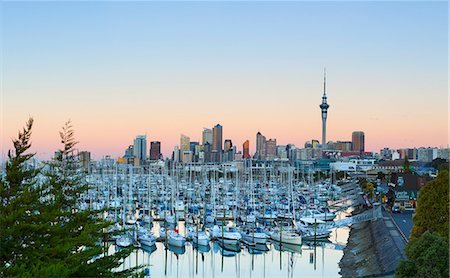The Future of Antifoul Coatings
Antifoul coatings will continue to be required in the future to allow vessels of all types to move efficiently through the water, unimpeded by biofouling.
Antifoul coatings are also essential to prevent the transmission of foreign marine pests from one region to another. The consequences of non-native marine species taking hold are imbalances and destabilisation of natural marine ecosystems.
Traditional Ablative (Eroding) Antifouling Paint - Environmental + Health Impacts
Ablative antifouling paints function by shedding the outermost layer of paint to expose a fresh layer of biocides.
Antifouling paint typically leeches its entire biocide content into the marine environment in 12 to 24 months. It then requires replacement and the same cycle resumes.
Biocides in antifouling paint are targeted at biofouling on vessel hulls, however, they can be catastrophic to the health of our oceans. The world’s oceans produce 50% of the oxygen we breathe and store 50 times more CO2 than the earth’s atmosphere.
The continuous release of biocides into the marine environment kills and incapacitates fish and marine life.
Continual exposure to biocides contained in antifouling paints is likely to cause permanent damage to human health.
Ablative antifouling paints are typically comprised of 40 – 60% solvent. On opening a container of ablative antifouling paint or during its application, 40 – 60% of the product’s volume is emitted into the atmosphere as solvent vapour (VOC – Volatile Organic Compounds).
VOC emissions are a primary cause of ozone depletion and ocean warming.
Primers, tie coats and undercoats that are required beneath ablative antifouling paints are also high in solvent content, adding to environmental pollution and damage.
Areas with high concentrations of vessels e.g., marinas accommodating 500 to 2,000 craft, experience tonnes of biocides leeching into their water annually. Seabeds are a concentration of toxic material. The water is largely bereft of sea life.
The Future of Ablative (Eroding) Antifoul Coatings
The movement to prohibit the use of biocides in ablative [eroding] antifouling paint and biocide discharges into the marine environment has global momentum.
Every year, most countries around the world outlaw biocides and biocide boosters in antifouling paint to prevent further harm to sea life and their marine environments. In less a decade, 60% of biocides previously used by the manufacturers of ablative antifouling paint are banned.
It is acknowledged that the performance of antifouling paints is compromised by the regulated reduction or removal of biocides. The effectiveness of the antifouling paint to prevent fouling or the period of time over which it is effective, or both, are reduced.
The discharge of up to 60% of an antifouling paints volume as VOCs into the atmosphere in the space of several days, has become unacceptable.
The discharge of 100% of an antifouling paint’s biocides into the marine environment over 12 to 24 months, has become unacceptable.
The Future of the HullWell Underwater Surfaces Coating System
HullWell products are solvent-free …. they do not discharge VOCs into our atmosphere.
HullWell coatings are classified as non-eroding …. they do not leech biocides into our marine environment.
HullWell coatings are effective (hull substrate protection and biofouling prevention) for between five and tens times longer than ablative antifouling paints.
Across all vessel and marine infrastructure sectors, the HullWell Underwater Surfaces Coating System is being recognised as the most economically viable, efficacious and environmentally responsible antifouling system available.
Read the Environmental Awareness and the Future of Antifoul Article
Westhaven Marina, Auckland, New Zealand
Beehive Island, Hauraki Gulf, New Zealand
Request a Proposal
We look forward to discussing an optimised solution for your project. Call 021 300 025 or Request a Proposal



